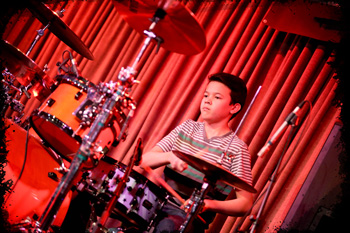
To a drummer, there’s no sweeter sound than the banging of drums, the clashing of cymbals, and the steady beat of a kick pedal in action. But to everyone else, the loud noise of drums can be irritating, especially when heard anywhere outside of a rock concert. Yet, to make it to that concert stage, a drummer has to practice, and not just during his drum lessons in Phoenix. For those living with or near a drummer, this means thunderous music on a frequent basis….a scenario some might find unwelcoming after time.
Although drums are inherently loud, the good news is there are several ways to lower their volume. Read on to learn how to minimize the sound of your drums so that you can restore some peace and quiet to your home (and no, we’re not referring to the noise of drums this time).
Cushion the Bass Drum
The bass drum is by far the loudest part of a drum set, and one of the easiest ways to decrease its sound is to fill it with a pillow, blanket or other soft cushion. Doing so will greatly reduce its sound bearing abilities. While the bass drum will still make noise when struck, the sound produced will be a much quieter version of the real thing. Use this simple trick and you’ll be able to play just as passionately at home as you would during your drum lessons in Scottsdale, but muted for the benefit of others.
Invest in Drum Mutes
Drum mutes are a must-have item for any drummer, and a dream come true for parents and neighbors who are tired of hearing racket 24/7. These handy-dandy rubber pads help to suppress sound and make practicing at a low volume a real option for a drummer. Made for both drums and cymbals, drum mutes stick right to the instrument to stifle its blaring sound without stifling a drummer’s playing abilities.
Switch to Mesh
Similar to drum mutes, mesh drum heads are designed to give drummers a nearly sound-free practice but without completely inhibiting a stick’s rebound and bounce. Simply swap out the regular drum head for a mesh one and your practice will be almost as quiet as if you weren’t playing at all, yet it will still retain a very realistic feel.
Consider an Electronic Drum Set
If you haven’t already bought your at-home practice set, consider opting for an electronic drum set instead of an acoustic one. Electronic drum sets allow you to control the volume of play more easily than acoustic sets. With an electronic drum set, a drummer is able to use headphones to cancel out noise, and the overall set is less sensitive to a drummer’s touch, thereby mitigating extra loud noise caused by a player’s powerful drumming.
Seal in Sound
Everyone knows that noise travels, but what if you could trap sound in its place? That’s exactly the basis for soundproofing a room, an option that would definitely deaden the noise of a drum session for any outside listeners. While soundproofing a room isn’t cheap, it may be worth it in the long run since it allows a drummer to practice freely without sacrificing sound or the sanity of nearby neighbors who long for uninterrupted quiet. If soundproofing an entire room isn’t an option for you, you could always seal your door during practices instead. Door sealers prevent sound from escaping a room and can easily be applied and removed within minutes. With this simple material, you’ll be able to practice just as fiercely as if you were at one of our regular drum lessons in Scottsdale, but without all the fear of upsetting others’ delicate ears.
Raise Your Volume and Skill Level with Drum Lessons by Scottsdale Music Academy
While rocking out with force maybe frowned upon at home, at Scottsdale Music Academy it’s mandatory. If you’re looking for a place where you can be as loud and passionate as you want during your solo or group drum lessons, Scottsdale Music Academy is where it’s at. With us by your side, you’ll learn more than just how to control noise…you’ll learn how to play music that speaks volumes.

